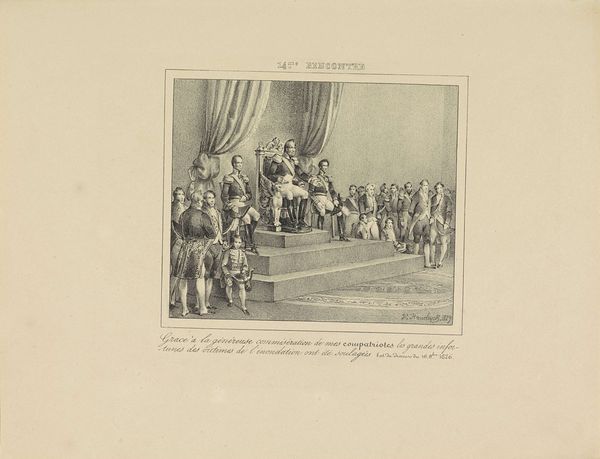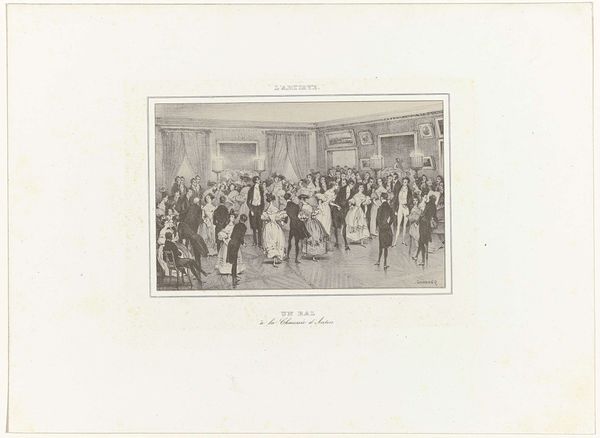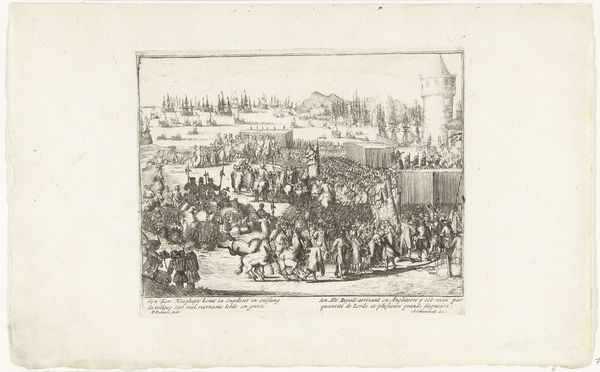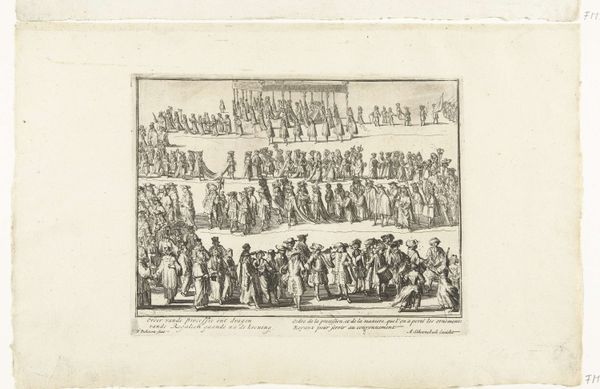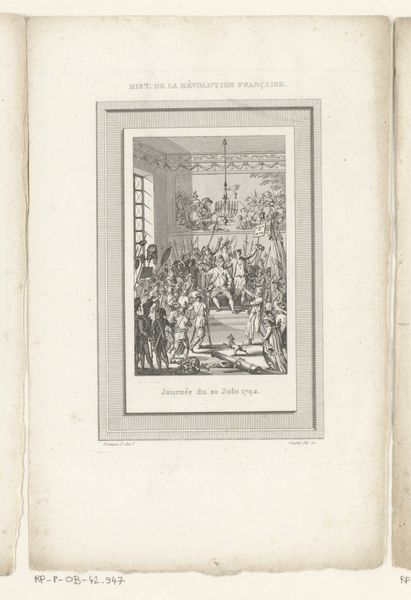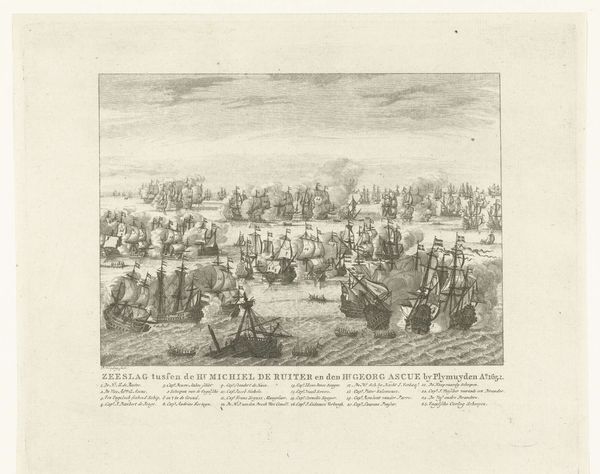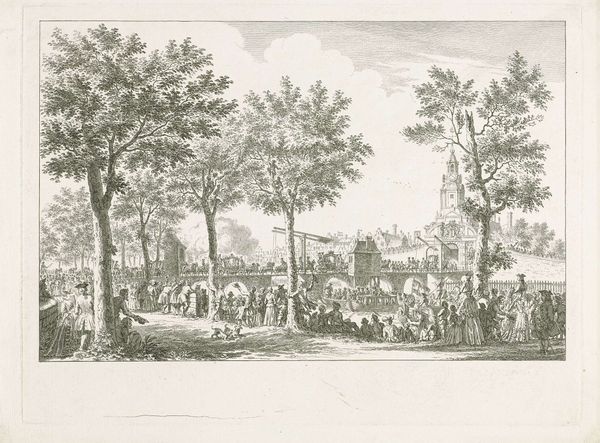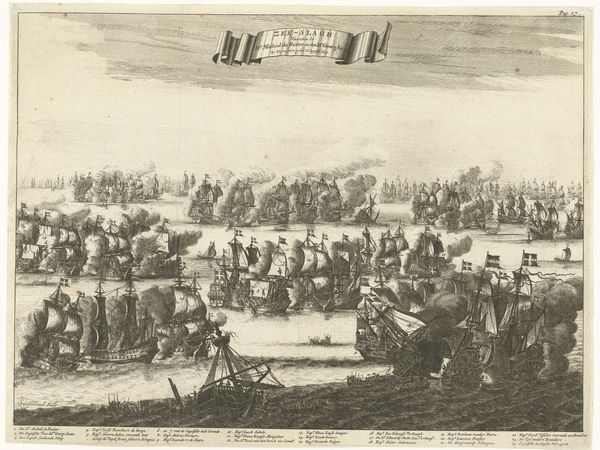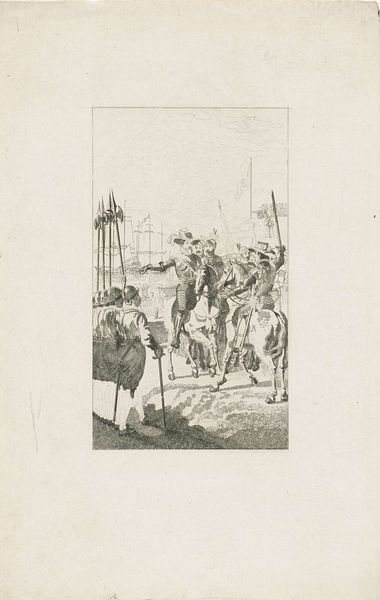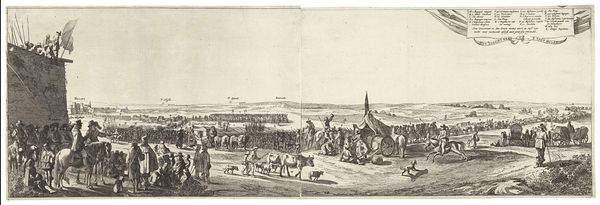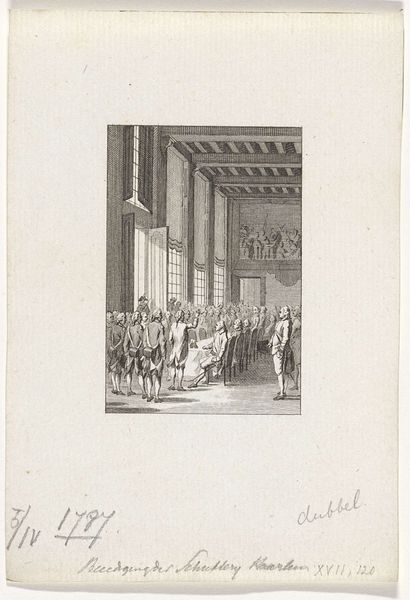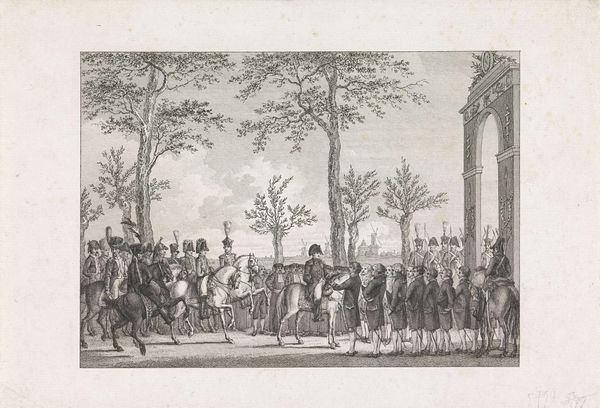
drawing, ink, pen
#
drawing
#
neoclacissism
#
figuration
#
ink
#
pen-ink sketch
#
pen
#
genre-painting
#
history-painting
Dimensions: height 280 mm, width 430 mm
Copyright: Rijks Museum: Open Domain
Editor: This pen and ink sketch, "Katholieke Communie," by Pieter Bartholomeusz. Barbiers, probably created between 1782 and 1837, captures a moment of what appears to be a Catholic communion. There's such a sense of ordered chaos and movement in this piece, almost like a snapshot of a larger event. What do you see when you look at this work? Curator: Beyond the surface, I see a window into the social dynamics of the time. Neoclassicism often presented idealized visions, but this piece offers something different, almost like a critical observation. Who is granted access to this sacrament, and on what terms? Look at the arrangement of bodies, the clear hierarchy, and the gazes that either participate or are excluded from the ceremony; What stories do these various social arrangements tell? Editor: It does seem to be focused on the structures within the community rather than just a simple act of communion. The expressions seem so serious and are perhaps indicative of some level of tension. Curator: Precisely. Think about the artist's position. Was he simply documenting a religious ritual, or was he subtly critiquing the power structures inherent in such ceremonies, particularly concerning the role of women or marginalized individuals within the Church at that time? The artist is forcing us to ask questions. Editor: So, it's less about the specific event of communion and more about using that event to comment on broader societal roles and power dynamics? Curator: Exactly. The drawing becomes a platform for exploring complex issues of religious authority, gender roles, and social stratification during the late 18th and early 19th centuries. The real question then is, does this still apply today, and in what ways? Editor: I see it now! I came in thinking it was just a historical scene, but it reflects the same ongoing debates about who gets to participate and on what terms, and maybe also reveals something about the position of the artist in portraying that specific moment. Curator: That is why looking through different lenses allows us to unravel so much more from seemingly straightforward pieces!
Comments
No comments
Be the first to comment and join the conversation on the ultimate creative platform.

